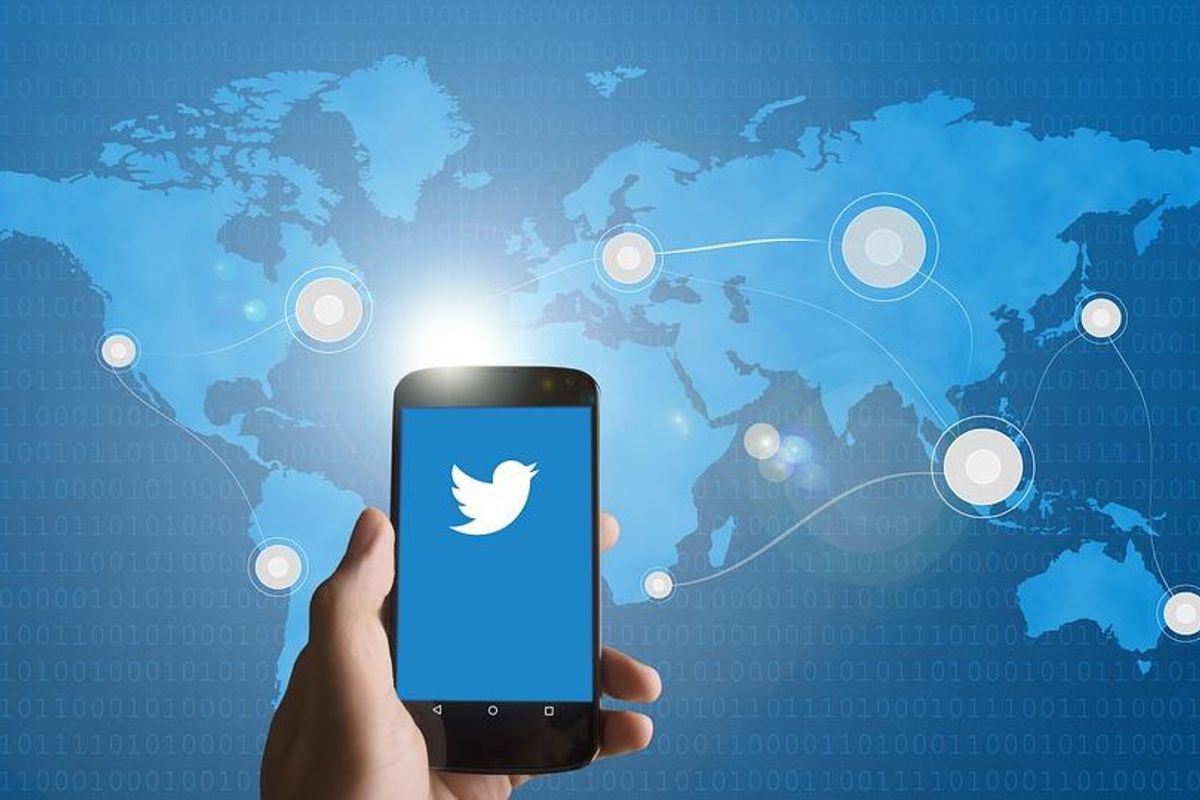The data proves people are completely right when they say Twitter 'isn't a real place'
Twitter is not real life.

A smart phone connecting to the world through Twitter.
There has been a lot of hand-wringing and teeth-gnashing over the past few weeks after billionaire Elon Musk took over Twitter.
Although, Musk presents himself as a free speech advocate, his critics fear he will turn the place into a fertile breeding ground for hate and misinformation.
“The reason I acquired Twitter is because it is important to the future of civilization to have a common digital town square, where a wide range of beliefs can be debated in a healthy manner, without resorting to violence,” Musk wrote.
The nationwide reaction to Musk’s takeover is due, in part, to the fact that Twitter is extremely popular with people in the media and "very-online" news junkies. This makes the platform a great place to get breaking news but also creates a skewed version of reality for both the media and those who overconsume it.
In his controversial 2021 Netflix special “The Closer,” Dave Chappelle made light of the public’s overestimation of the platform’s importance. "Apparently, they dragged me on Twitter,” he said. “I don't give a f*ck because Twitter's not a real place."
A new poll by Pew Research Center does a great job of putting Twitter, and Musk’s involvement with the platform, into proper perspective. Around 1 in 5 Americans (23%) use Twitter, about the same number as those who use WhatsApp (23%) and Snapchat (25%).
Can you imagine the world freaking out over someone buying Snapchat?
The top 10% of active users on Twitter create 138 tweets a month, while the median user in the bottom 90% tweets an average of twice per month. To put it simply, Twitter amplifies the voices of a very, very small percentage of the American population.
This imbalance makes it very easy for Twitter users to develop a funhouse mirror version of reality and it also bleeds into the real world. As the preferred social media tool for journalists and media types, it plays a huge role in shaping public opinion. But given the small number of voices actually speaking on the platform, is it an accurate representation of reality?
Travis View, host of the QAnon Anonymous Podcast, a show about conspiracy theories in the “post-truth era,” reality-checked the forum on December 11 and it received nearly 5,000 likes.
\u201cI find it helpful to remember two humbling facts. 1) Normal people don\u2019t have a Twitter account. 2) 90% of Twitter users create just two tweets per month on average.\u201d— Travis View (@Travis View) 1670815713
If you have a Twitter account and tweet several times a week, please understand you a weird person. You are not representative of the general population. There’s something wrong with you that isn’t wrong with normal people.
— Travis View (@travis_view) December 12, 2022
When it comes to politics, Joe Biden’s White House has found success by proudly brushing off Twitter’s influence over his party. When Biden ran in the 2020 Democratic primary, his campaign’s mantra was “Twitter isn’t real life.” Washington Post columnist Jennifer Rubin notes that the media’s fixation on the party activists who dominate Twitter created a skewed version of the average Democratic voter.
“The hyper-partisan left-wing rhetoric on social media — a realm where many media personalities live — is not representative of the party,” Rubin wrote, and Biden won “despite the media’s fixation on the loud but less politically viable left wing.”
A former White House staffer told Semafor that Twitter is an “afterthought” in White House communications.
The idea that extreme views on Twitter aren’t representative of the general voting public was confirmed in a 2019 New York Times study, “The Democratic Electorate on Twitter Is Not the Actual Democratic Electorate.”
When you look at the data, it’s pretty obvious that Twitter isn’t “real life” or a “real place,” but social media never was supposed to be in the first place. If the internet has taught us anything over the past generation it's that the trouble starts when we confuse the digital world with reality. That’s why it’s important we all find the right balance in our lives and take time to put the phone down and touch grass to see what's really happening.

